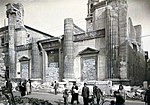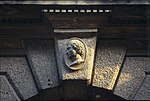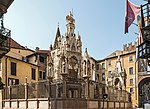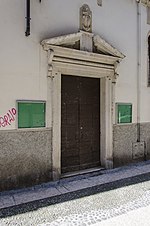University of Verona
1982 establishments in ItalyEducational institutions established in 1982Universities in ItalyUniversity of Verona
The University of Verona (Italian: Università degli Studi di Verona) is a university located in Verona, Italy. It was founded in 1982 and is organized in 12 Departments. According to business newspaper Il Sole 24 Ore, it is ranked as the best non-private university in Italy in 2014, 2015 and 2016.
Excerpt from the Wikipedia article University of Verona (License: CC BY-SA 3.0, Authors).University of Verona
Vicoletto Cieco Dietro San Francesco, Verona Veronetta
Geographical coordinates (GPS) Address Website External links Nearby Places Show on map
Geographical coordinates (GPS)
| Latitude | Longitude |
|---|---|
| N 45.436666666667 ° | E 11.003611111111 ° |
Address
Università degli Studi di Verona
Vicoletto Cieco Dietro San Francesco
37129 Verona, Veronetta
Veneto, Italy
Open on Google Maps










